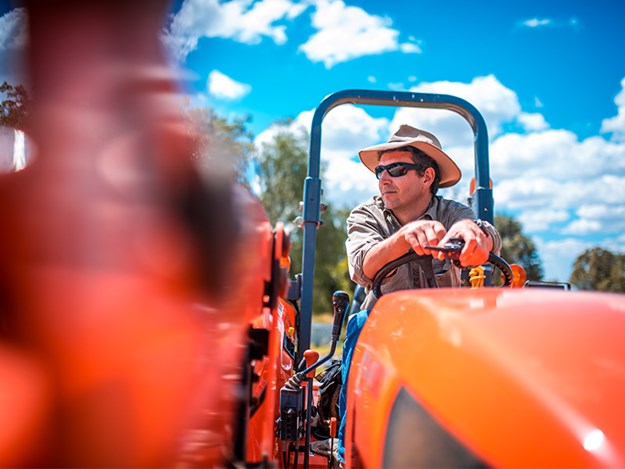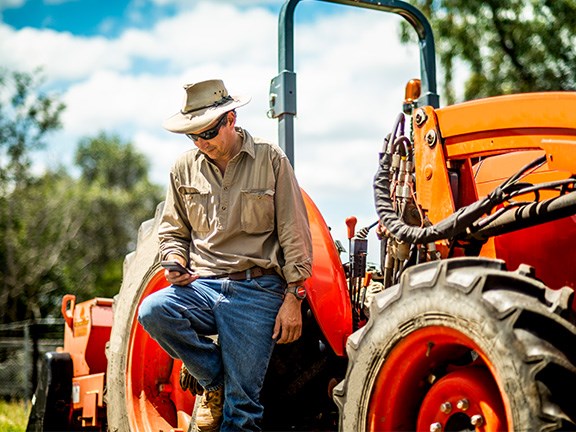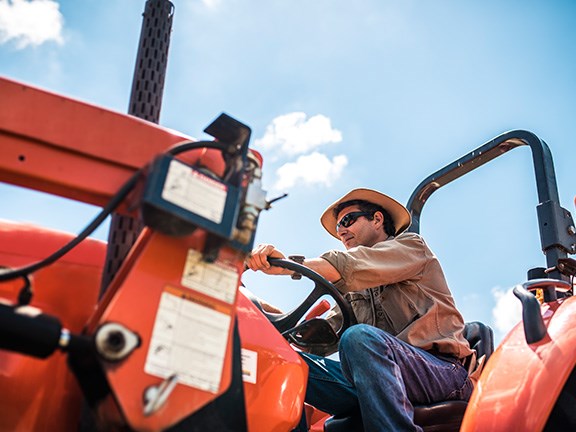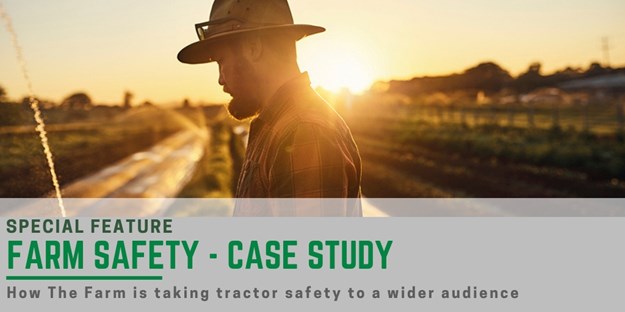Recent improvements in farm safety appear to have stalled, promoting key stakeholders to call for renewed action to reduce the high rate of injuries and fatalities
 |
|
Credit: AzmanL/E+/Getty Images – Tractors remain one of the most dangerous pieces of equipment, accounting for more than 16 per cent of non-intentional farm deaths
|
Agriculture is Australia’s most dangerous industry, making up nearly a quarter of all workplace fatalities. To date this year 27 people have died. While the agriculture industry makes up just 2 per cent of Australia’s workforce, it suffers 21 per cent of workplace fatalities. Since 2014 alone 320 people have lost their lives on farms, of which 89 were killed by farm machinery or plant.
While quad bikes fatalities and injuries have soared in recent years, tractors still remain one of the most dangerous pieces of equipment, accounting for more than 16 per cent of non-intentional farm deaths. In 2017 there were more deaths caused by mobile plant machinery than quad bikes.
An in-depth review by the University of Sydney’s AgHealth Australia showed that between 2001 and 2016 there were 204 tractor-related fatalities on Australian farms, of which 56 per cent involved run-over and 33 per cent rollover. Sixty-eight per cent of fatalities involved people aged over 55.
While the good news is the long-term trend with tractor-related fatalities is downwards, the bad news is the improvement seems to have stalled, with the number and rate of fatalities remaining relatively unchanged over the past 16 years.
In the early 1980s Australia was seeing in excess of 30 tractor-related deaths a year, 70 per cent of those from rollovers. Education, improved technology and manufacturing standards, as well as legislation requiring rollover protection structures (ROPS), has reduced that number significantly, such that run-overs are now more common than rollovers. It’s estimated that 80 per cent of tractors in Australia now have ROPS fitted, and that 70 per cent of rollover deaths occurred on tractors without ROPS. AgHealth recommends tractors without ROPS be removed from service or have ROPS retrofitted.
Although no data are available, anecdotal evidence suggests that seatbelts are rarely worn by tractor operators, even when fitted. The review recommends enhancement of seatbelt use, particularly on tractors without a cabin.
Significant run-over risks include working around tractors, particularly in front of the rear wheels, without the handbrake applied. Visual blind spots were frequently a contributing factor in deaths involving children. Children were also involved in accidents where they were thrown from the tractor while riding as a passenger.
 |
|
Credit: lovro77/E+/Getty Images – AgHealth Farm safety project officer Kerri-Lynn Peachey says one important step to ensure safety is to fit safe access steps that enable access outside the line of the rear wheel of the tractor
|
ROOM FOR IMPROVEMENT
The review recommends farming advocacy organisations push for the take-up in safety features such as the “dead-man’s seat,” whereby the tractor cannot start if pressure is not applied to the seat. The report suggests that a “re-invigorated and systematic approach is required to further reduce the tractor fatality burden in Australia.”
An earlier report published by the University of Sydney made 28 recommendations for improving tractor safety, including manufacturing modifications to allow access only from outside the wheel track, preventing access to the starter motor while standing between the wheels, cabin door latch handles that can only open upwards, to minimise accidental opening, an emergency stop control fitted in a position accessible from outside the wheel track, compulsory audible reversing alarms and the compulsory retrofitting of ROPS on older model tractors.
AgHealth’s Safe Tractor Operation Guide breaks down risks into seven key areas – rollover, run-over, power take-offs, hydraulics, ergonomics, noise and operator skill – and offers guidelines to manage each of those risks.
Farm safety project officer Kerri-Lynn Peachey says the fitting of ROPS on all tractors is essential, but it’s not the only thing we should be doing.
“Tractor run-overs are now the leading cause of tractor-related deaths, responsible for about 50 per cent of all fatal tractor injuries. Tractors continue to be a leading cause of fatal injury on Australian farms, with over 100 lives lost since 2010,” she says.
Peachey says other important steps to ensure safety is to fit safe tractor access steps that enable access outside the line of the rear wheel of the tractor, and to ensure the tractor master guard and implement guards are fitted before operating any PTO-powered machinery.
 |
|
Credit: AzmanJaka/E+/Getty Images – 70 per cent of rollover deaths occurred on tractors without ROPS
|
CHANGING BEHAVIOURS
Under Safe Work Australia’s Australian Work Health and Safety Strategy 2012-2022 agriculture was identified as a priority industry.
This year Safe Work Australia engaged consultancy company ThinkPlace to help reveal the behavioural and cultural factors that contributed to the prevalence of injuries and fatalities in agriculture. Specifically it asked the question: “Why aren’t people identifying hazards and controlling risks on farms, when information and interventions appear readily available?”
Although it was a relatively small study in terms of participants it revealed significant insights into the safety mindsets of a cross-section of agricultural operators. Understanding issues around safety in farming means understanding the mental framework in which farming operates.
“Australian farming is a deeply cultural practice,” it says. “Norms and behaviours around farming are influenced by culturally shared traits and perceptions. These traits are often passed down to children and ingrained in the farming ‘way of life.’”
It took the view that to improve safety on farms we need to understand farming culture and the reasons farmers behave in the way they do.
The four key insights the study found were that: “Investments in safer equipment and practices are generally considered in the context of economic and efficiency gains”; “When people change behaviour to adopt safe practices it is usually based on near-misses, trial and error experiences and local stories”; “farmers expect contractors will take responsibility for their own safety, trusting that they have safer equipment and experience”; and that “There is significant social norming of risky behaviour from an early age in farming families and communities, passed down through generations and across communities.”
The study found that while many farmers recognised a need to make investments that would help manage risk, it was often not a priority, or couldn’t be a priority due to financial constraints. Overworked and often desperate to sow or harvest when the conditions are right, following safety procedures often gets left by the wayside, sometimes leading to dangerous or careless actions.
It noted that farming has gone from low-tech, high-labour to an almost complete reversal of that mix as technology has advanced and the available workforce has diminished. A lack of skilled help in rural areas has led to farmers taking on more themselves, spreading tasks more thinly and consequently exposing themselves to more risks.
Many farmers did not consider risk management as part of a positive working culture, preferring a “common sense” approach to safety, while admitting they sometimes engaged in high-risk activities.
Past experiences and stories are the key drivers for change, with the witnessing of accidents or near-misses, along with local folklore and stories, the main impetus for improving safety practices.
The concept of a chain of responsibility is near non-existent, with farmers trusting that any contractors employed by them will be responsible for their own safety. Equipment is often acquired with little or no training in its safe operation aside from generational transfer of knowledge. This mindset results in hazards and risks being inherited with that generational transfer of knowledge.
A more statistical study undertaken by Safe Work Australia in 2013 showed that over an eight-year period 93 farm workers were killed as the result of an incident involving a tractor, and that risk of being killed in a tractor incident increased with age.
It cited a common cause of run-over fatalities being the driver getting off the tractor to open a gate and being unable to regain access to the tractor while it was moving.
Over the same period 14 people were killed after being trapped or crushed by a tractor, either when undertaking repairs to the tractor or loading/unloading the tractor.
 |
|
Credit: AzmanJaka/E+/Getty Images – A common cause of run-over fatalities being the driver getting off the tractor to open a gate and being unable to regain access to the tractor while it was moving
|
TIME FOR ACTION
National Centre for Farmer Health is a partnership between Western District Health and Deakin University. It aims to improve the health and wellbeing of farmers, farm workers and associated families and communities across Australia.
Director Susan Brumby says it’s concerning that fatality rates in farming have stayed largely static (at around 17 per 100,000 workers) while other high-risk industries such as mining and road transport have seen big improvements.
She says the good news is that improvements have been made in reducing tractor rollovers through increased use of ROPS, and that WorkSafe Victoria’s “15-minute farm safety check” has received good feedback from farmers.
The check involves making a list of priorities based on the likelihood of and the consequence of a variety of incidents. It covers high-risk areas of farming such as tractors and equipment, silos and field bins, chemicals and electricity cables.
WorkSafe Victoria also provide documents on its website covering tractor safety issues to do with attachment-related accidents, ROPS requirements, power take-off guarding and tractor-driven post hole entanglement; while the Victorian Farm Safety Training Centre organises a “Managing Farm Safety” course.
Brumby wants farming and agriculture to catch up with the vast safety improvements seen elsewhere. “Other industries have done it, let’s make farming next,” she says.
The overriding message through all is that trusting in luck and common sense isn’t good enough anymore. Tractors and heavy machinery are inherently dangerous and accidents can – and do – occur with even the most experienced operators.
There’s no room for complacency or for turning a blind eye to unsafe practices. While no one is suggesting farming is an easy game, or that buying a brand-new, top-of-the-line tractor is an option for everyone, we still need to play our part in making sure everyone returns home to the dinner table safe every day. Other industries have cleaned up their act, it’s time we did, too.
KEY RISK AREAS
- Rollover
- Run-over
- Power take-offs
- Hydraulics
- Ergonomics
- Noise
- Operator skill
Source: AgHealth Australia’s Safe Tractor Operation Guide
RECOMMENDATIONS FOR IMPROVEMENT
- Fitment of a “dead-man’s seat,” whereby the tractor cannot start if pressure is not applied to the seat
- Preventing access to the starter motor while standing between the wheels
- Cabin door latch handles that can only open upwards to minimise accidental opening
- Emergency stop control fitted in a position accessible from outside the wheel track
- Compulsory audible reversing alarms
- Compulsory retrofitting of ROPS on older model tractors
- Fitment of access steps that enable access outside the line of the rear wheel of the tractor


